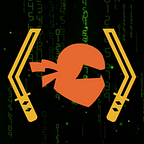Why Should Children Learn to Code Through STEM Education And How Do They Do It?
In our earlier article where we explained STEM Education, we talked about how the ‘T’ was short for Technology and STEM uses software as well as hardware to accomplish Project-Based Learning. We at Turing Ninjas actually use STEM to teach young children programming and therefore wanted to emphasize how much of a role coding plays in STEM Education.
The Why:
It is a fact that we interact with technology all-day. In fact, the average US citizen spends nearly 12 hours and 7 minutes on major media. Children of the 21st-Century i.e. generation Z are going to grow up with marvelous technological advancements, thanks to the power of programming and Artificial Intelligence.
In the world of Data, you are given two choices- be a producer or be a consumer. The software has become a HUGE part of our lives and having the ability to create and play with it is a superpower. Today’s children, who will be tomorrow’s workforce, need to understand how to integrate programming into their fields and become a data producer even if they aren’t part of the IT Sector.
STEM Education focuses on building the skills to solve real-life problems using a mixture of technology, science and logic, and the best way to teach children how to integrate technology and logic is to teach them to Code. This way, they learn to develop their own solutions and answers than using pre-existing ones. It also develops Computational Thinking which is vital in instilling problem-solving abilities in kids.
Learning and working on programming languages teach children how to break down complex problems and concepts into simpler manageable byte-sized ones. They also help them visualize abstract ideas. And one of the most practical and non-scholastic benefits is that children understand how to deal with failure and improvement of their work.
The How:
STEM Education always works by grouping technology with natural and formal sciences so children are taught to code by understanding the functions that different parts of code can perform. Below are few resources which can be used for teaching programming to kids with some guidance.
- Pushing aside the scholar subjects, applications like Scratch and ScratchJr are used to teach coding as part of STEM. These platforms let children bring their imagination in the form of stories, games, or just animations into the world.
- One more such kid's favorite platform is Roblox, where they can design, build and create their own 3D worlds and games.
- MIT also provides MIT App Inventor platform for developing mobile applications. Using this platform students all around the world have build apps with global impact.
- Programming language Python is something that is easy to learn for kids due to its casual language-based statements. Students can start with spirography using Turtle graphics, thus strengthening the concepts of Math and Geometry.
- Physical kits like Makey-Makey bring the code from a single technological device to connections made from circuits to things like buckets of water or bananas. These kits teach children to make the thought-connection between technical and non-technical concepts and expanding their knowledge of science and electronics.
- One of our favorite kits is Micro:bit, a pocket-sized computer designed for use in computer education. With Micro:bit kids gain hands-on experience in programming hardware and can create utility apps.
Apart from the above, there are numerous web and mobile applications and STEM educational kits available for children from early years to teens, which help learn to code and develop computational thinking.
The Conclusion:
Coding in STEM education plays the role of the thread that connects the dots from theoretical science to practical technology. We have to understand that it has become a nearly universal requirement that has applications in all fields of work.
Machine literacy and Technological Awareness begins at a young age at Turing Ninjas. We emphasize Coding through both virtual aids and manual toys(STEM kits) so that we make sure our Ninjas are having fun while they learn to tackle the world of programming.
